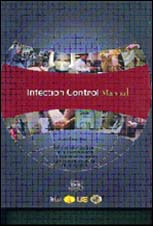|
Infectious diseases contribute 40% of total burden of disease in Pakistan. Infections acquired in Health Care settings in the country are one of the important components of overall problem. Proper infection control practices at health care facilities not only prevent infections among health care workers, and patients but also contribute enormously in reducing infection in the community.
Bridge” in collaboration with “Infection Control Society of Pakistan”, “Infectious Dieses society of Pakistan” and AIDS International Training Research Program, University of Alabama at Birmingham, USA, organized a workshop to develop guideline for infection control at healthcare facilities according to local conditions and recourse constraints.
Participants of workshop came form all four provinces of the country which included, Policy makers, Hospital Administrators, Microbiologists, Public Health Specialists, Physicians and Surgeons. Dr Kingsley C Sathia Kumar came from University of Alabama at Birmingham, USA to facilitate the workshop. The workshop was inaugurated by Lt. Gen (R) Professor K.A. Karamat, Executive Director National Institute of Health (NIH) Islamabad. The concluding session was provided by Justice (R) Abdul Razaq Thaheem, Federal Minister Local Government.
Based on the recommendation of that workshop as well as on the guidelines of center for Disease Control (CDC), International Federation of Infection Control (IFIC) and APIC an” Infection Control Manual” has been developed.
The main purpose of this Manual is to provide assistance in developing and implementing infection control program at health care facilities (Public Private) and to provide recommendations for Infection Control. |
 |